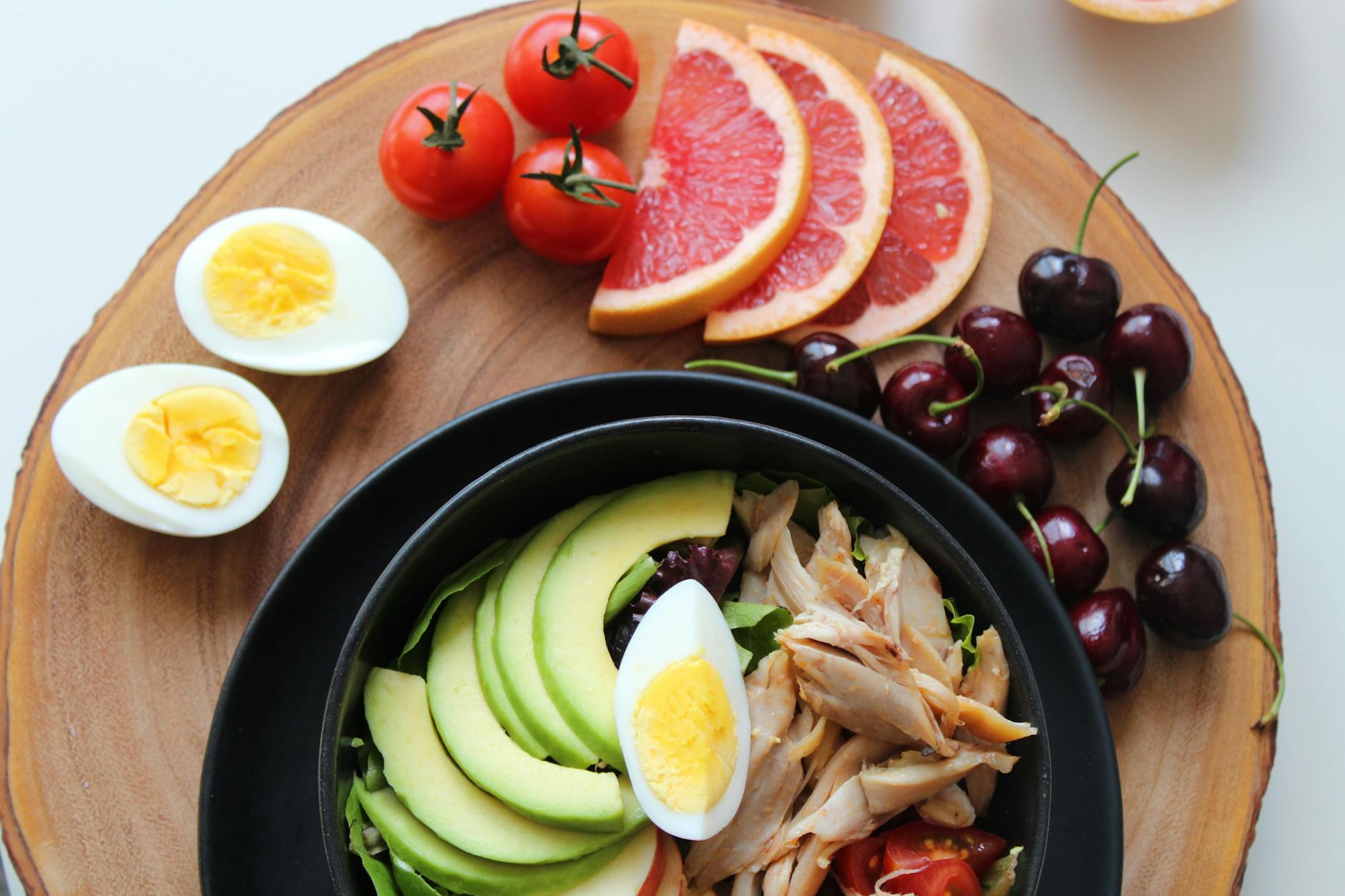Unlock the secrets of the keto diet with these essential tips and tricks for beginners. Get ready to transform your health!
Table of Contents
Welcome to your ultimate guide to starting the keto diet! If you’re new to the idea of a low carb, high fat lifestyle, you may feel overwhelmed with all the information out there. But fear not, we’re here to guide you through the process step by step.
Before we dive in, let’s take a moment to understand what the keto diet is all about. The ketogenic diet, or keto for short, is a high fat, low carb eating plan that has gained popularity for its numerous health benefits.
By drastically reducing your carbohydrate intake and increasing your consumption of healthy fats, the keto diet puts your body in a state of ketosis, where it burns fat for fuel instead of carbohydrates. This can lead to rapid weight loss, increased energy levels, and improved mental clarity.
Understanding Ketosis
One of the key concepts to grasp when starting the keto diet is ketosis. Ketosis is a metabolic state in which your body is burning fat for fuel instead of carbohydrates. To achieve ketosis, you need to drastically reduce your carb intake to around 20-50 grams per day and increase your fat consumption.
There are several signs that you are in ketosis, including increased energy, mental clarity, and weight loss. You can also use keto test strips to measure the ketones in your urine and confirm whether you are in ketosis or not.
To help your body achieve and maintain ketosis, make sure to drink plenty of water, get enough electrolytes, and avoid high carb foods like sugar, grains, and starchy vegetables.
Creating a Keto Diet Plan
When starting the keto diet, it’s important to have a plan in place to help you stay on track and reach your goals. The first step is to calculate your macronutrient goals, which typically involve consuming around 70-75% of your daily calories from fat, 20-25% from protein, and 5-10% from carbohydrates.
Here’s a sample meal plan for beginners to give you an idea of what to eat on the keto diet:
- Breakfast: Scrambled eggs with spinach and avocado
- Lunch: Grilled chicken salad with olive oil dressing
- Dinner: Baked salmon with asparagus
Don’t forget to incorporate low carb fruits like berries, avocado, and tomatoes into your meal plan for added flavor and nutrients.
Keto-Friendly Foods
When following the keto diet, it’s important to focus on whole, nutrient-dense foods that are low in carbs and high in fats. Some keto-approved foods include:
- Meat and poultry
- Fatty fish like salmon and mackerel
- Low carb vegetables like leafy greens, cauliflower, and zucchini
- Nuts and seeds
- Healthy fats like olive oil, coconut oil, and avocado
To make meal prep easier on the keto diet, consider investing in kitchen tools like a food scale, meal prep containers, and a quality blender or food processor.
Keto-Friendly Recipes
Looking for some delicious keto-friendly recipes to spice up your meal plan? Try making your own keto bread with almond flour, eggs, and a touch of baking powder. It’s the perfect base for sandwiches or toast.
For a satisfying snack, whip up some keto-friendly snacks like cheese and meat roll-ups, avocado slices topped with salt and pepper, or a handful of mixed nuts.
When planning your meals, make sure to include a variety of flavors and textures for a diverse and fulfilling keto menu plan.
The Science Behind Keto
Curious about the science behind the keto diet and how it works on a physiological level? When your body is in ketosis, it produces ketones, which are molecules that serve as an alternative energy source for your cells, including your brain.
To enhance your keto experience, consider supplementing with Keto Max Science products, which are designed to support your body’s fat-burning capabilities and help you reach your keto goals faster. Keto can also be particularly beneficial for women over 50, as it can help boost metabolism and support healthy aging.
Meal Planning and Preparation
Meal planning is essential for staying on track with the keto diet. Start by creating a simple keto meal plan that includes a variety of protein sources, healthy fats, and low carb vegetables. This will help you stay organized and avoid making impulsive food choices when hunger strikes.
| Topic | Description |
|---|---|
| Understanding Keto | Learn the basics of the ketogenic diet and how it works. |
| Benefits of Keto | Explore the various health benefits of following a keto diet. |
| Getting Started | Tips for transitioning into a keto lifestyle and setting yourself up for success. |
| Meal Planning | Strategies for planning keto-friendly meals that are delicious and satisfying. |
| Shopping List | Essential keto-friendly foods to add to your grocery list. |
| Common Mistakes | Avoid pitfalls and setbacks with these tips on common keto mistakes to avoid. |
| Tracking Progress | Tools and methods for tracking your progress on the keto diet. |
When eating out or traveling, make sure to stick to keto-friendly options like salads with protein, grilled meats, and non-starchy vegetables. And don’t be afraid to ask for modifications to cater to your dietary needs.
Tracking Progress and Adjusting
Consistency is key when it comes to the keto diet. Track your progress by monitoring your macronutrient intake and weighing yourself regularly to see how your body is responding to the diet.
If you hit a plateau or are not seeing the results you want, consider making adjustments to your diet, such as reducing your carb intake further or increasing your physical activity. Remember, everyone’s body is different, so it may take some trial and error to find what works best for you.
Overcoming Challenges
As with any diet, there are challenges that you may encounter when starting the keto diet. Common issues like keto flu, which can cause fatigue, headaches, and muscle cramps, can be mitigated by staying hydrated, getting enough electrolytes, and gradually transitioning into the diet.
Stay motivated on your keto journey by celebrating non-scale victories, like improvements in energy levels, mental clarity, and overall well-being. Remember, progress takes time, so be patient with yourself and trust the process.
Conclusion
Congratulations on taking the first step towards a healthier, more energized version of yourself with the keto diet! By following the tips and tricks outlined in this crash course, you’ll be well on your way to mastering the art of keto and reaping its many benefits.
Remember, the key to success on the keto diet is consistency, patience, and a willingness to adapt as needed. With dedication and a positive mindset, you can achieve your health and wellness goals with confidence and grace.
FAQ
Here are some common questions related to the keto diet:
Question 1: What are the main principles of the keto diet?
Answer 1: The keto diet focuses on high fat, low carb foods to put your body in a state of ketosis, where it burns fat for fuel instead of carbs.
Question 2: How can I tell if I’m in ketosis?
Answer 2: Signs of ketosis include increased energy, mental clarity, and weight loss. You can also use keto test strips to measure ketones in your urine.
Question 3: What are some common keto-friendly foods?
Answer 3: Keto-friendly foods include meat, fatty fish, low carb vegetables, nuts, seeds, and healthy fats like olive oil and avocado.
Question 4: How can I track my progress on the keto diet?
Answer 4: You can track your progress by monitoring your macronutrient intake, weighing yourself regularly, and making adjustments to your diet as needed to reach your goals.





